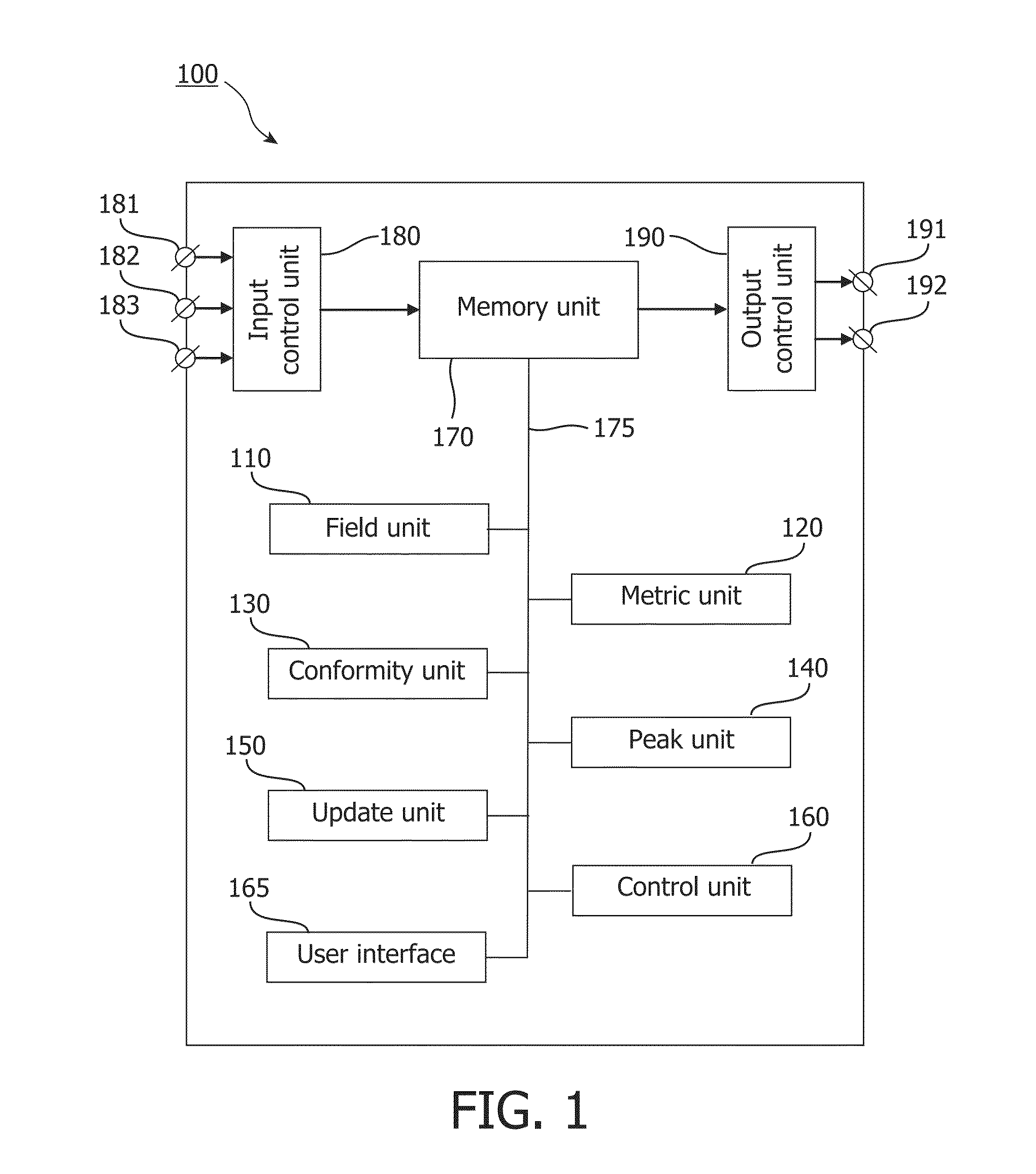Automatic point-wise validation of respiratory motion estimation
a motion estimation and point-wise validation technology, applied in the field of automatic point-wise validation of respiratory motion estimation, can solve the problems of reducing introducing incorrect deformations, and unable to guarantee the success of registration, so as to reduce the probability of positive validation
- Summary
- Abstract
- Description
- Claims
- Application Information
AI Technical Summary
Benefits of technology
Problems solved by technology
Method used
Image
Examples
Embodiment Construction
[0041]FIG. 1 schematically shows a block diagram of an exemplary embodiment of the system 100 for validating motion estimation, comprising:
[0042]a field unit 110 for obtaining a deformation vector field estimating the motion by transforming a first image at a first phase of the motion into a second image at a second phase of the motion;
[0043]a metric unit 120 for computing a metric of a local volume change at a plurality of locations; and
[0044]a conformity unit 130 for computing a conformity measure, based on the computed metric of the local volume change at the plurality of locations and a local property of the first or second image defined at the plurality of locations.
[0045]The exemplary embodiment of the system 100 further comprises:
[0046]a peak unit 140 for detecting peaks in the conformity map;
[0047]an update unit 150 for updating the deformation vector field, based on the computed conformity measure.
[0048]a control unit 160 for controlling the work of the system 100;
[0049]a u...
PUM
 Login to View More
Login to View More Abstract
Description
Claims
Application Information
 Login to View More
Login to View More - R&D
- Intellectual Property
- Life Sciences
- Materials
- Tech Scout
- Unparalleled Data Quality
- Higher Quality Content
- 60% Fewer Hallucinations
Browse by: Latest US Patents, China's latest patents, Technical Efficacy Thesaurus, Application Domain, Technology Topic, Popular Technical Reports.
© 2025 PatSnap. All rights reserved.Legal|Privacy policy|Modern Slavery Act Transparency Statement|Sitemap|About US| Contact US: help@patsnap.com



